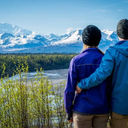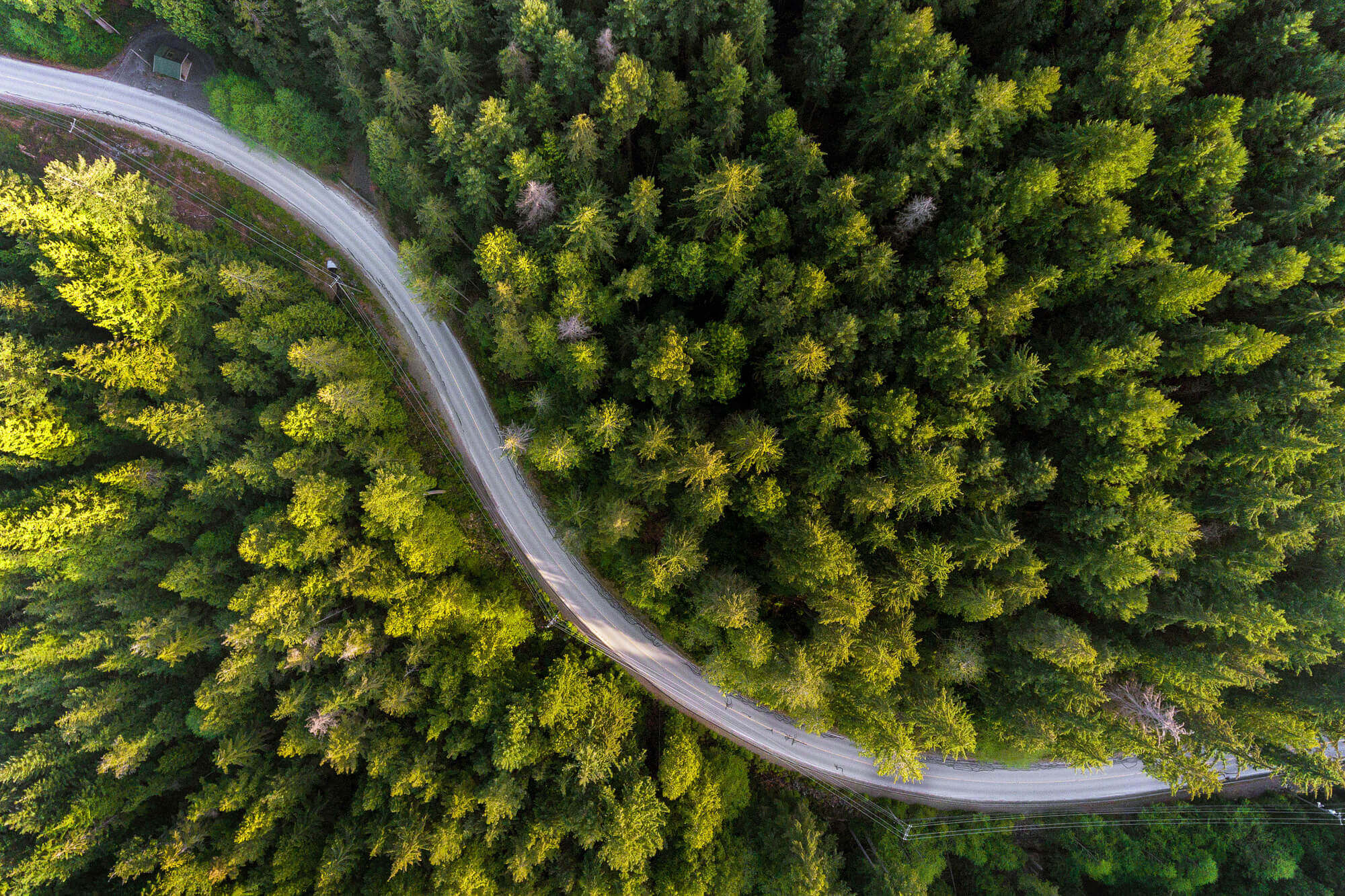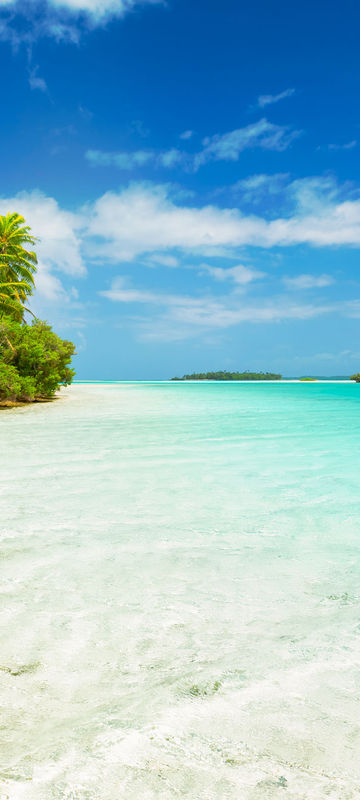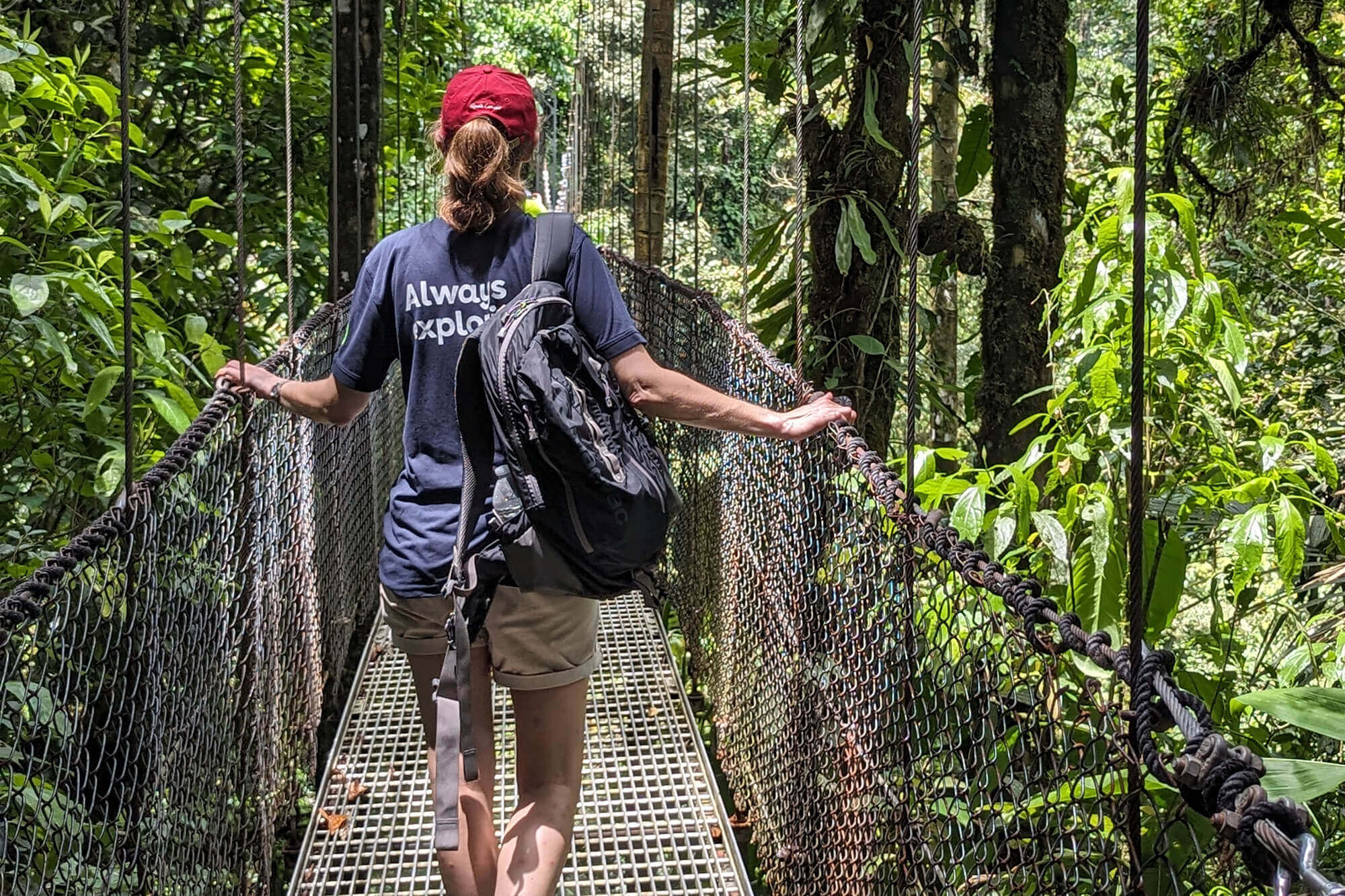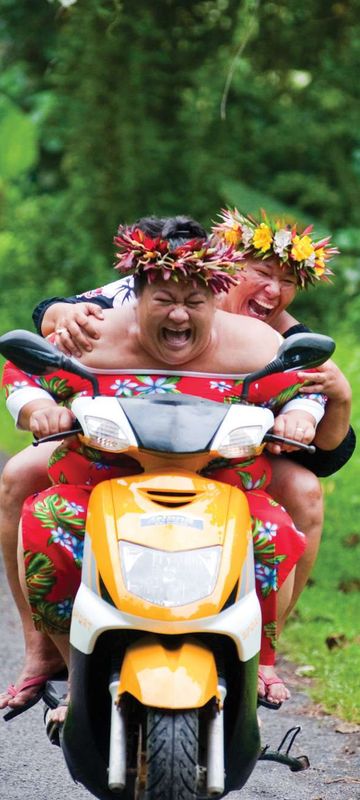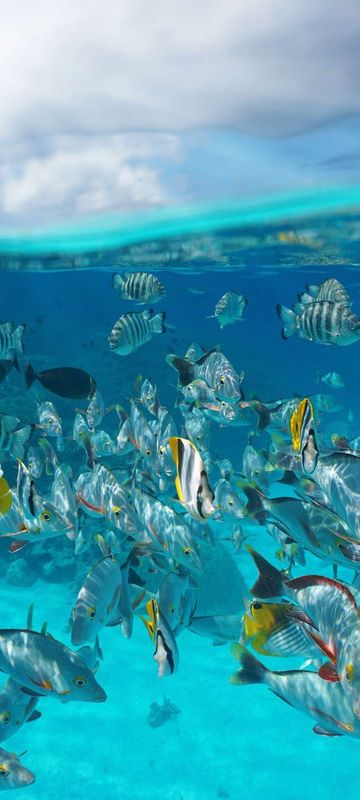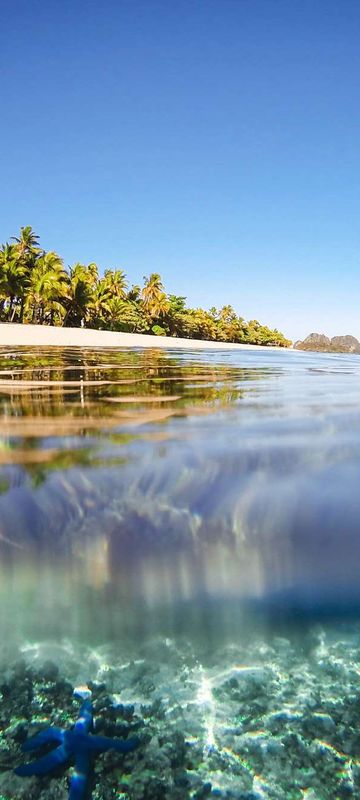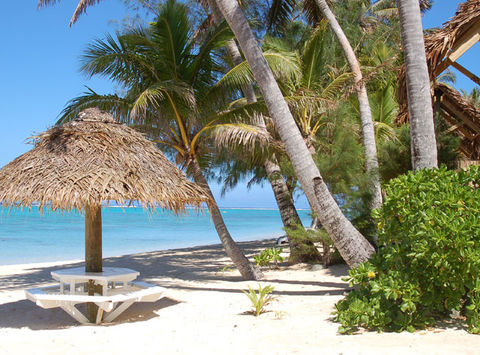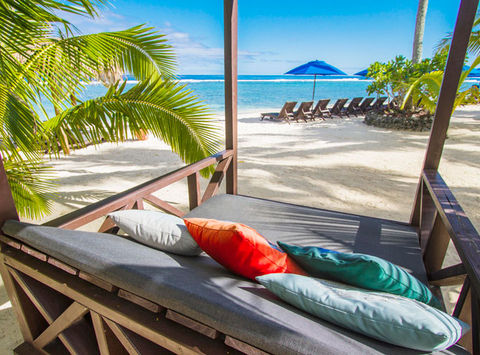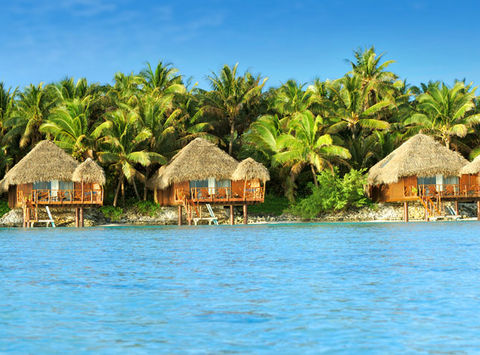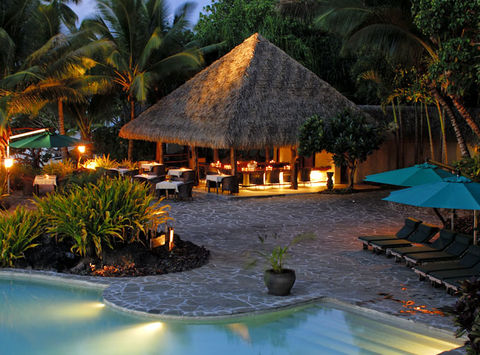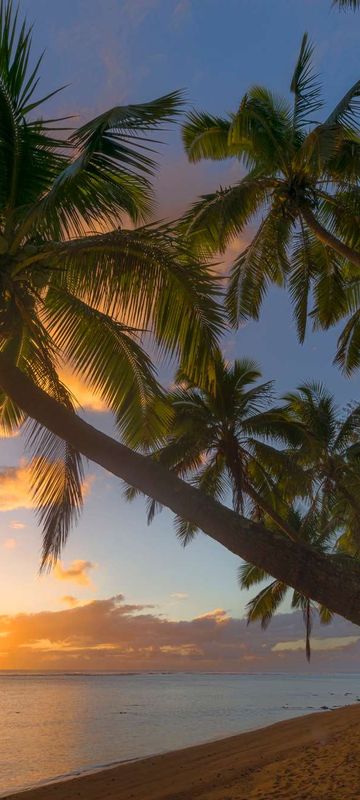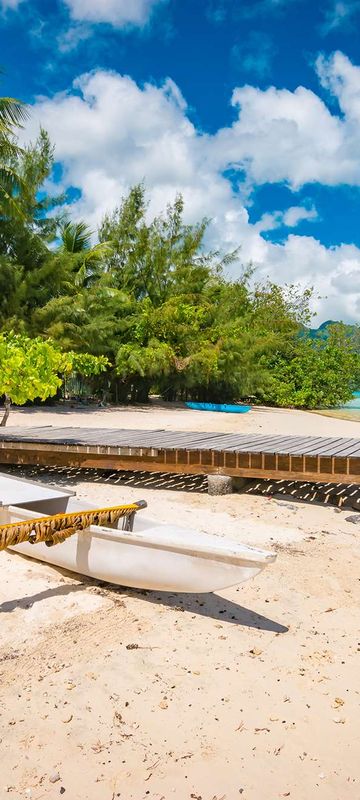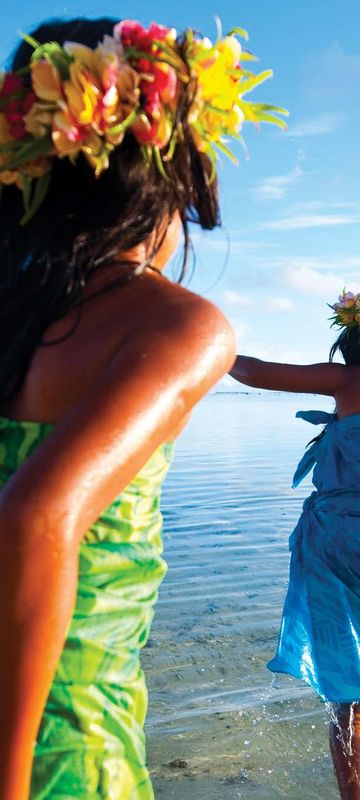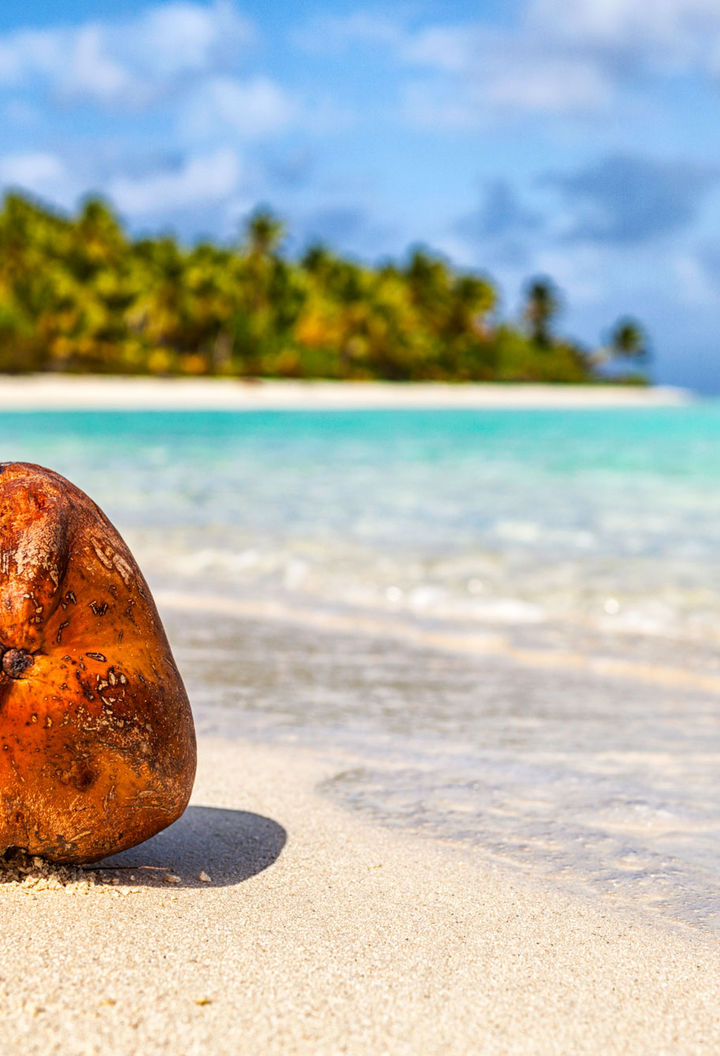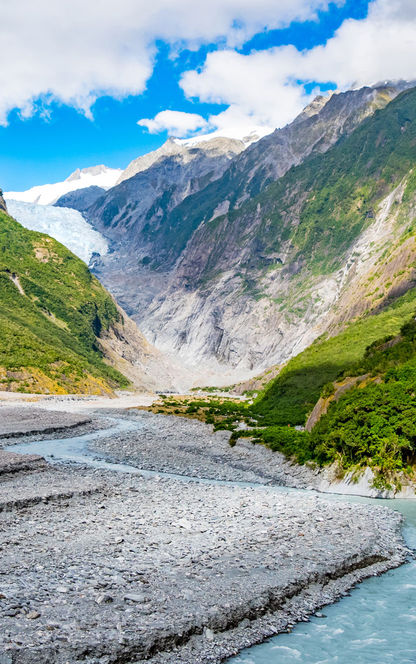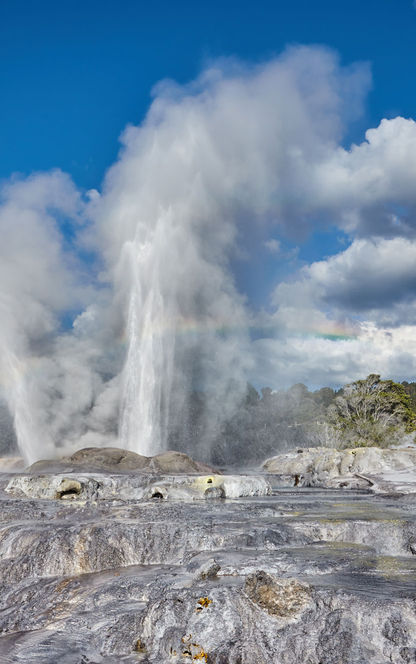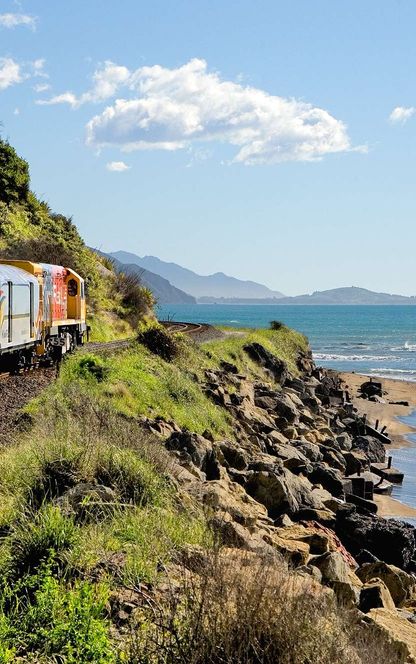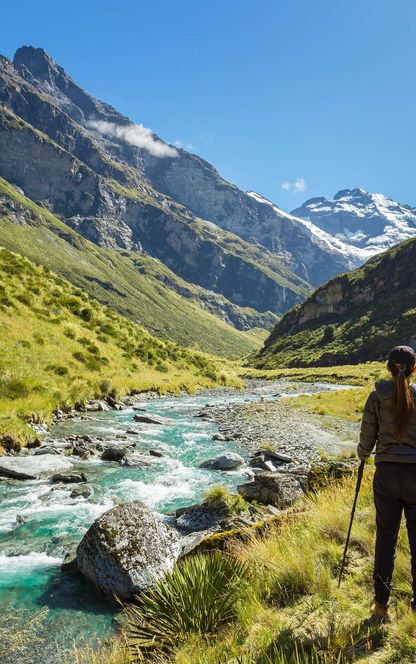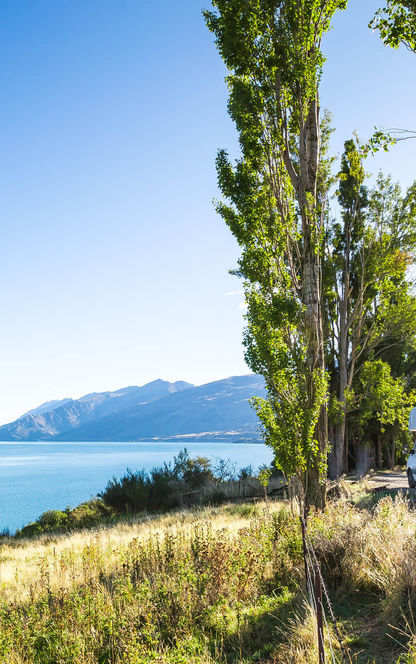Best time to visit the Cook Islands
Enjoying a tropical climate, there’s not much variation in temperature in the Cook Islands making it a year round destination. It’s slightly cooler from June to August, but even the 30-degree-plus highs of the hottest months (January to March) are tempered by ocean breezes.
Like most South Pacific islands, it can rain any month, usually in short-lived downpours, bringing relief to high humidity. The highest rainfall occurs in summer between November and March.
What is the sea temperature in the Cook Islands?
Put simply: idyllic. Sea temperatures fluctuate from a low of around 25°C to a high of around 28-29°C – perfect if you’re contemplating a spot of snorkelling or diving.


